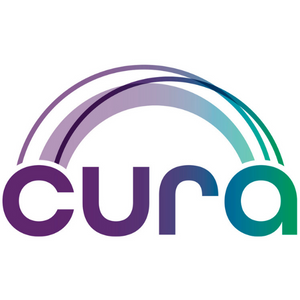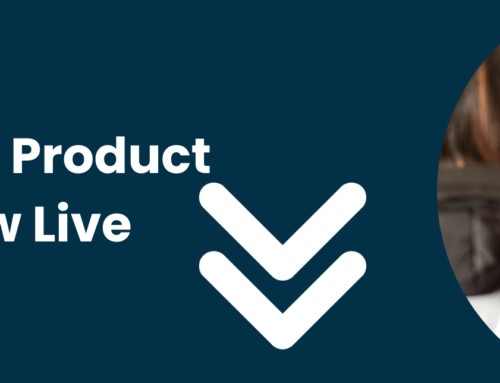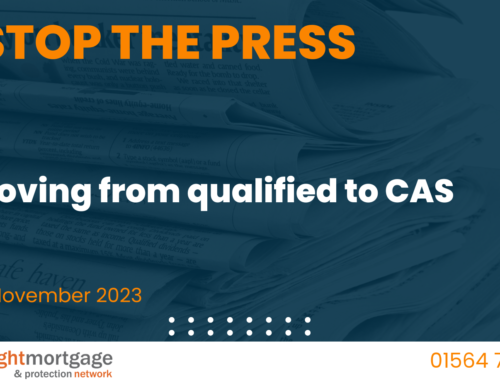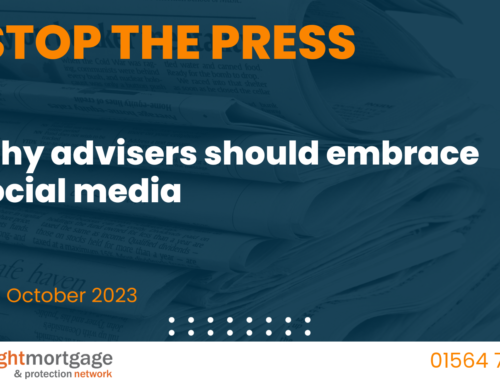
The remortgage and product transfer (PT) opportunity
To say that the mortgage market, and the options it currently has available to all types of borrowers, is something of a national obsession right now, I think would be a slight understatement.
Of course, we’ve always been very keen on discussions around property, notably house prices and values, and what our neighbours are doing, but this feels like a shift-change and is without doubt the consequence of over a decade of ultra-low interest rates, and the relatively recent and quick move away from this towards much higher-priced products.
First-time buyers will be looking at this current market and wondering why they are trying to buy for the first time now, rather than a couple of years ago, but it is perhaps existing borrowers coming to the end of their deals in 2023 and 2024, who will be feeling the discomfort the most, and potentially wondering how they find the extra money required to fund their monthly mortgage payments given the current rates available.
It’s perhaps no wonder this has been the subject of many front pages, and many political discussions recently, because a large part of this feels like the consequence of Government economic policies, and potentially, a Bank of England that was too slow to act.
The fate of borrowers and, specifically, the difference in mortgage payments they might have to stomach compared to their last mortgage deal, has been a heavily politicised topic of conversation in recent weeks,
Indeed, I’m sure you’ll agree, most advisers would argue that previous Governments of all hues have been very keen to talk to the big mortgage banks and lenders, but perhaps have paid too little notice to those who are at the front line in trying to find the right solutions for borrowers, particularly over the last 12-18 months when the mortgage market has been so tumultuous.
Indeed, you may also feel that advisers have been overlooked or, perhaps, not listened to even though it is advisers who are having to find the right product solutions, who are having to meet the higher affordability obstacles, who are having to explain why the higher rates, rather than the one or two per cent of yesteryear.
In addition, it is advisers who also have to deal with lender service issues and delays, very short notice product withdrawals, and clients who may well be somewhat bewildered at the rate of change and the lack of time they appear to have in terms of deciding which recommended product to choose.
However, at the same time, it is this remortgage/product transfer (PT) sector that is perhaps the most important to advisers, given the sheer number of borrowers who come off previous deals each month, but also in terms of what it allows advisers to cover – financial wants and needs beyond the mortgage, and therefore the opportunity to save client’s money in other areas.
It’s for this very reason we have a specific Remortgage & Product Transfer Hub for member firms with sales guides and aids, resources and specific lender criteria information, all designed to be a one-stop shop for advisers dealing with those existing clients coming to the end of their deals.
And, of course, we all know how important this ‘recurring’ business is and the fact that, not only do clients expect constant communication from their adviser to make them aware of their situation and what might be available to them, but advisers continue to compete with the existing lender, who are now much more likely to contact the borrower four/five/six months’ in advance of the end of their deal, offering them PT rates.
To help in this regard, you can utilise the remortgage review module within The Key which identifies cases due for review, provides an indicative price for a replacement product (where possible), and emails the client directly to initiate contact.
That continued focus on the remortgage options available is vital, especially in a marketplace where many borrowers might feel they only have PTs from their existing lender to fall back on and very little else. Advisers know only too well that income generated from PT business is far less than a remortgage, and therefore presenting available options from other lenders at an early stage, should signal to the customer they do have a greater degree of choice than they might think.
Overall, in a marketplace where purchase business is not the force it was two/three years ago, existing clients/borrowers assume an increased importance. Plus, they genuinely want advisers to contact them and spell out the market choices they have; they were, after all, confident in your service last time round. There’s no excuses for not letting them know you can provide the same again, in fact, they should have no doubt who should be servicing their mortgage needs this, or indeed any, time.
Latest News
Get in touch
Anita White
Head of Lender Relationships
Equity release document updates
In line with Consumer Duty changes, this month the equity release documents have been developed and updated but with our advisers in mind. Working with an adviser working group, we have amended and improved various documents. We have also included a new step to the equity release process where by a bank statement is now reviewed as part of the process to access vulnerability and really help capture the customers full story.
Latest News
Get in touch
Victoria Clark
Head of Equity Release
House repossessions more than double over a year, official figures show, as banks take back properties due to missed mortgage payments
Consumer Duty – what does that mean?
We have a duty of care to clients to act in good faith to make sure there isn’t any foreseeable harm and also help clients reach their financial objectives. The Right Mortgage & Protection Network have produced for you an ‘insurance declaration’ and we think this, coupled with the risk report from Solution Builder will protect you from any future complaints, should any come in.
I’ve been asked this week by several advisers: “Where in the process does it sit?”.
My thoughts are, every time the opportunity presents itself! In your ‘introduction’ explaining your TOB, then again at the affordability calculator (if you are a mortgage adviser bonus extra opportunity!). Now if you are a mortgage adviser and for some reason don’t want to advise on the life, just hand it off, and say ‘as your home is at risk if you don’t keep up the repayments’ my colleague will contact you to explain more about keeping your home.
A recent article in ‘this is money’ reported: ‘House repossessions more than double over a year, official figures show, as banks take back properties due to missed mortgage payments’
- Repossessions by county courts increased 134% at the end of 2022
How would you feel if it was one of your clients and they made a complaint that you didn’t advise them about protection?
When you come back with quotes, take the declaration and risk report, explain it and if the client insists they don’t need it get them to confirm they don’t need it, by signing the declaration and then send them a copy for their files.
Royal London said: “A recent study from the FCA has brought the age-old discussion of the protection gap into the spotlight once again. The FCA’s findings highlight that 12.8 million UK adults have low financial resilience, defined as the ability to withstand life events that impact your income. Protection advice exists to help people retain their financial resilience when unexpected life events occur. Therefore should this be the first advise given to each customer?”.
There is a misconception that protection is only required when a customer takes out a mortgage. This should not be the case.
One thing that is guaranteed in life is the odds on dying! Unfortunately it’s 1 in 1!
Let’s have a look at what our providers are saying….
Latest News
Get in touch

Amanda Wilson
Company Director
The rise of virtual GP apps
In the ever-evolving landscape of healthcare, technology continues to play a transformative role, revolutionising the way we access and receive medical care. One of the most remarkable developments in recent years has been the emergence of Virtual GP apps. These innovative platforms are reshaping the doctor patient relationship, offering convenience, efficiency accessibility like never before. As a Private Medical Insurance adviser, it is crucial to understand the impact of these virtual GP apps and advise your clients on this new frontier of medical care.
Clients no longer need to leave their homes and wait in crowded waiting rooms or take time off work for a simple consultation, prescriptions, or a referral. With just a few taps on their smartphones, they can connect with the Virtual GP, from the comfort of their home.
Encourage your clients to view these apps as tools and to complement their overall healthcare journey.
Should you require any further information or would like to have a chat, please get in touch.
An update on our PMI coffee mornings
The time has finally arrived, and our first coffee morning session has been booked. A Microsoft Teams meeting invite has been sent out for our first PMI Coffee Session. This is being held on Tuesday 5th September at 10am. So do not forget your fancy mugs and to put on your learning caps!
Latest News
Get in touch

Bipin Sandhu
PMI Supervision & Development Manager
Busting the myths around ASU
When was the last time you saw the latest accident, sickness and unemployment (ASU) insurance claim stats?
Well, things may have just changed. Take a look at the latest ASU claim stats from Paymentcare and MMS below.
Paymentcare
- 2020 = 10.74%
- 2021 = 8.83%
- 2022 = 11.16%
- Pre-existing Medical Conditions (for AS claims);
- Unemployment occurs within the initial exclusion period; or due to in-voluntary or misconduct dismissal.
- 90.5% of claims were paid;
- Does not meet eligibility requirements: 3.48%;
- Pre-existing condition: 1.61%;
- Prior knowledge of unemployment: 1.34%.
Surprised by these ASU claim stats?
Latest News
Get in touch
Amy Wilson
Head of General Insurance (PMI and GI)

















